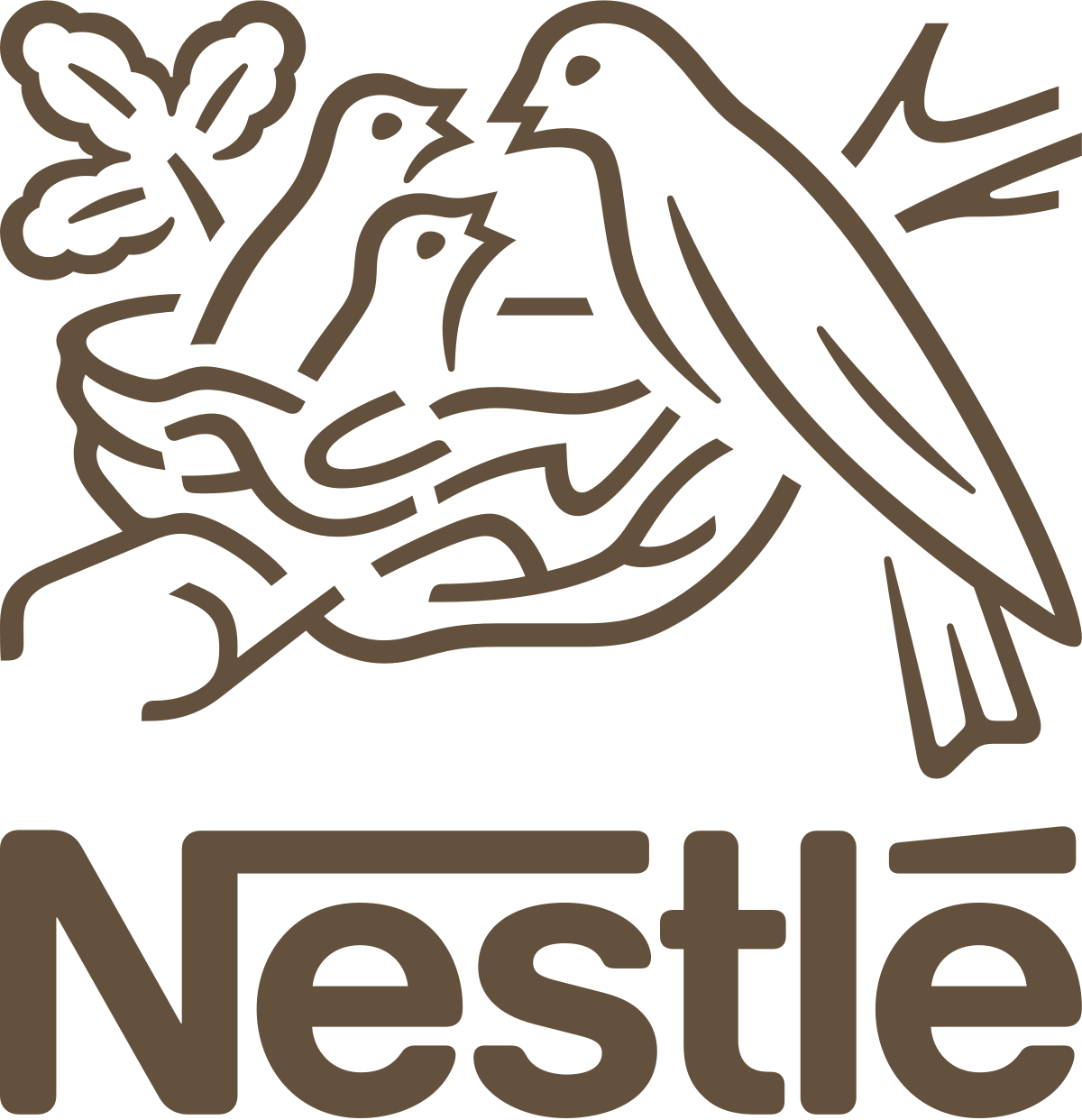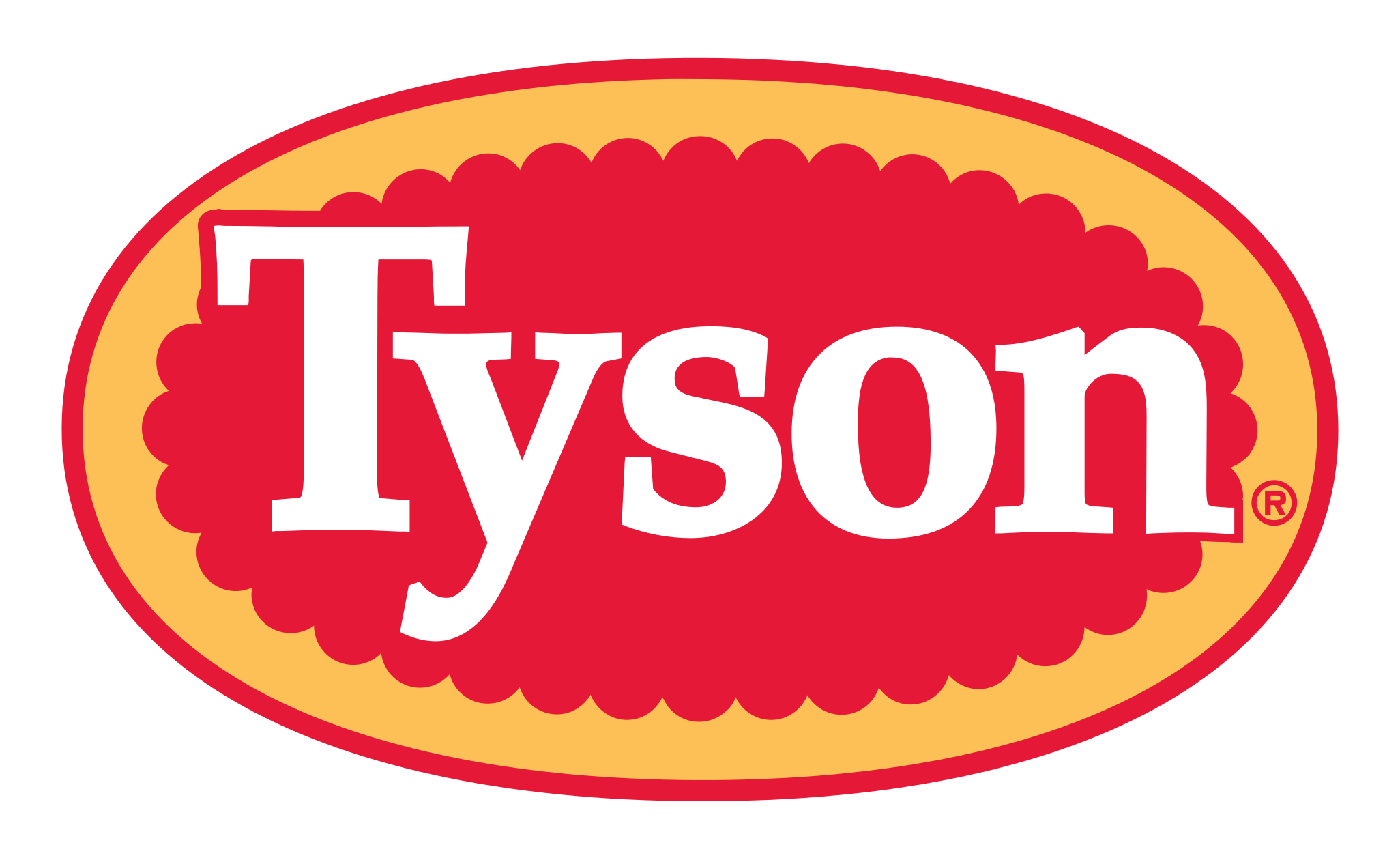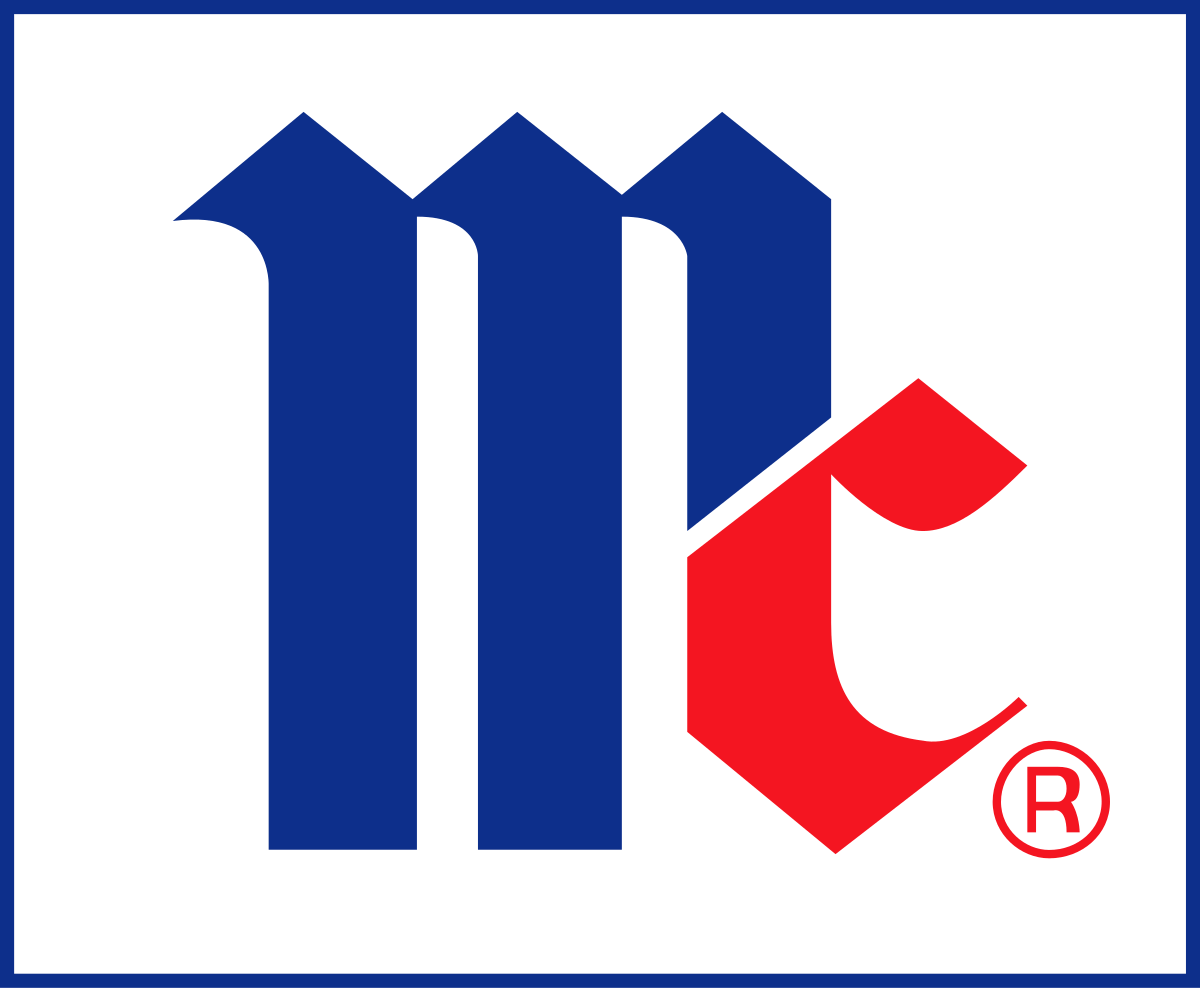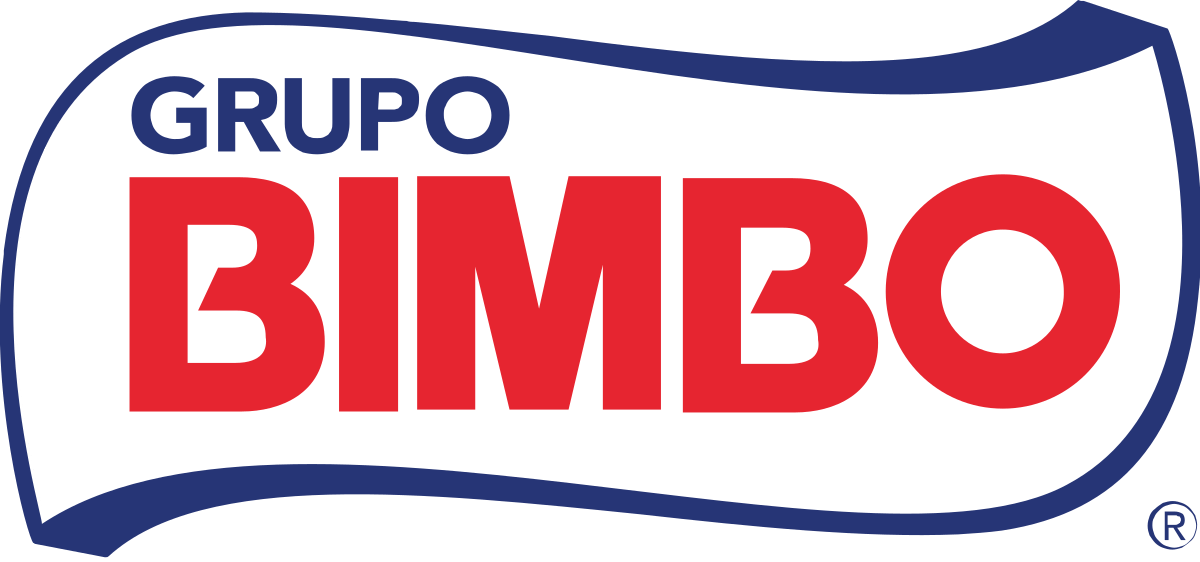Global Coconut Market, By Product Type, By Application, By Distribution Channel, By Region & Segmental Insights Trends and Forecast, 2024 – 2034
- Industry: Food & Beverages
- Report ID: TNR-110-1187
- Number of Pages: 420
- Table/Charts : Yes
- June, 2024
- Base Year : 2024
- No. of Companies : 10+
- No. of Countries : 29
- Views : 10163
- Covid Impact Covered: Yes
- War Impact Covered: Yes
- Formats : PDF, Excel, PPT
In Terms of Revenue, the Global Coconut Market was Worth US$ 3.3 Bn in 2023 and is Anticipated to Witness a CAGR of 9.5% During 2024 – 2034.
The global coconut market is witnessing substantial growth, driven by increasing consumer demand for natural and healthy products. Coconut products, including coconut water, milk, oil, and flour, have gained popularity due to their nutritional benefits and versatility in culinary applications. The trend towards plant-based diets and veganism has further fueled this demand, positioning coconut products as key alternatives in the food and beverage industry. One notable trend is the rise in consumption of coconut water as a natural and hydrating beverage, often marketed for its electrolyte content and health benefits. Additionally, the use of coconut oil in cooking, skincare, and haircare products is expanding due to its perceived health advantages.
Opportunities in the coconut market are abundant, particularly in emerging economies where coconut farming is prevalent. Investments in sustainable and organic farming practices can enhance yield and quality, catering to the growing health-conscious consumer base. Innovations in packaging and processing technologies also present avenues for market expansion. Key growth drivers include the increasing awareness of health and wellness, the shift towards organic and natural products, and the expanding applications of coconut derivatives in various industries.
The growing interest in functional foods and beverages, coupled with the rising popularity of exotic flavors, further propels the market’s growth trajectory. Moreover, the increasing consumer demand for lactose-free food, combined with the persistent need for natural ingredients in the food, bakery, and confectionery markets, is anticipated to present significant growth opportunities for major market players. For instance, in January 2022, Agro Tech Foods Ltd. introduced a coconut-based product line called Sundrop Duo, marking the company’s entry into the chocolate confectionery sector. These types of initiatives are likely to boost the demand for coconut products in the years ahead.

Coconut Market Dynamic
Growth Driver-
Rising Consumer Awareness and Preference for Healthy and Natural Products
As people become more health-conscious, they are increasingly seeking alternatives to conventional food and beverage options. Coconut products, such as coconut water, milk, and oil, are perceived as healthier choices due to their rich nutrient profile, including electrolytes, medium-chain triglycerides, and vitamins. The trend towards plant-based diets and veganism further supports this shift, as coconut-based products provide suitable alternatives for dairy and other animal-derived ingredients.
Additionally, the multifunctional nature of coconut products, used in cooking, skincare, and personal care, adds to their appeal. For instance, in September 2022, GraceKennedy Limited, a leading company in the Caribbean, broadened its coconut water offerings by launching “Coconut Water with Aloe.” This blend of coconut water and aloe vera is designed to offer extra health benefits and appeal to health-conscious consumers. This broad application range and the growing interest in organic and clean-label products significantly drive the market’s expansion, catering to the evolving consumer preferences.
Trends-
Surge in Demand for Coconut-Based Beverages
This trend is driven by the beverage’s reputation as a natural and hydrating alternative to sugary drinks and sports beverages. Coconut water is rich in electrolytes like potassium, making it a popular choice for health-conscious consumers and athletes seeking natural hydration options. For instance, in November 2023, Bonsoy introduced Sparkling Coconut Water, available in five flavors: Organic Natural, Watermelon, Passionfruit, Lychee, and Ginger. These ready-to-drink beverages come in 320mL cans. Similarly, in April 2022, ZICO, a subsidiary of The Coca-Cola Company, introduced a new line of sparkling coconut water.
This innovative product presents a carbonated and effervescent take on coconut water, offering consumers a refreshing and fizzy alternative to the traditional drink. In addition to plain coconut water, the market is seeing an increase in flavored and enhanced versions, appealing to a broader audience. The trend is also supported by the growing interest in clean-label products, with consumers favoring beverages that are free from artificial additives and preservatives. This shift towards natural hydration solutions aligns with the overall movement towards health and wellness, further bolstering the coconut market’s growth.
Challenge-
Vulnerability of Coconut Farming to Climate Change and Environmental Stressors
Coconut trees are highly susceptible to changes in weather patterns, such as increased temperatures, irregular rainfall, and extreme weather events like cyclones and typhoons. These climatic shifts can significantly impact coconut yield and quality, leading to supply shortages and increased production costs. Furthermore, many coconut-producing regions lack advanced agricultural infrastructure and resources, making it difficult to implement effective mitigation strategies against environmental changes. Pests and diseases, such as the coconut rhinoceros beetle and lethal yellowing disease, also pose threats to coconut plantations, further exacerbating the risk of crop failure.
Addressing these challenges requires substantial investment in sustainable farming practices, research, and development of climate-resilient coconut varieties, and improved agricultural support for farmers. For instance, In 2020, Nestle partnered with Barry Callebaut, Proforest, and the Earthworm Foundation to create a framework aimed at conducting and reporting sustainable coconut assessments. This initiative establishes a standardized method for performing and documenting evaluations of sustainability issues in coconut oil production.
Coconut Market Segmentation by Product Type, Application, Distribution Channel, Region
Coconut oil segment is set to dominate the coconut market, commanding a substantial revenue share of 34.4% over the forecast period. This dominance can be attributed to the increasing popularity of coconut oil due to its versatile applications in cooking, skincare, and haircare. Consumers are drawn to its health benefits, such as its potential to improve heart health, boost metabolism, and provide a natural moisturizer. The growing trend towards natural and organic products further fuels the demand for coconut oil. Additionally, the food and beverage industry is incorporating coconut oil into various products, from snacks to dairy alternatives, enhancing its market presence. The expanding awareness of its numerous benefits ensures sustained growth for the coconut oil segment.
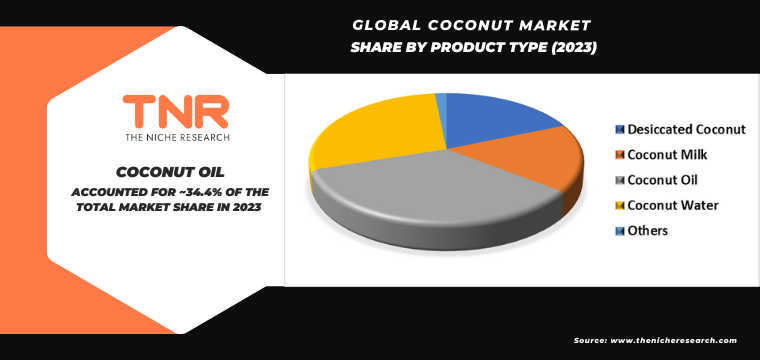
Cosmetics & personal care segment is anticipated to be the fastest-growing application in the coconut market, capturing a substantial revenue share of 30.6% over the forecast period.
This rapid growth is driven by the increasing consumer preference for natural and organic beauty products, with coconut oil and other coconut derivatives being highly valued for their nourishing and moisturizing properties. Coconut oil is renowned for its ability to hydrate skin, promote hair health, and act as a natural emollient, making it a popular ingredient in a wide range of skincare, haircare, and cosmetic products.
Moreover, the rising awareness of the benefits of using chemical-free and eco-friendly products is further boosting the demand for coconut-based personal care items. Brands are capitalizing on this trend by incorporating coconut oil in formulations for lotions, shampoos, conditioners, and makeup products. The versatility and natural appeal of coconut derivatives ensure their strong market presence and continued growth in the cosmetics and personal care industry.
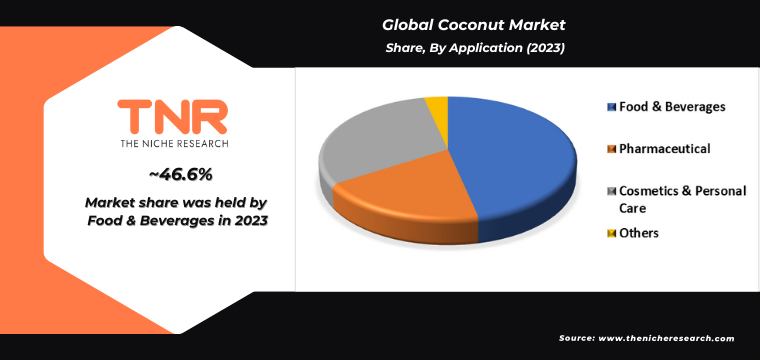
Indirect segment by distribution channel dominated the coconut market, capturing a significant revenue share of 64.1% over the forecast period. This segment includes hypermarkets/supermarkets, convenience stores, specialty stores, independent retailers, online retailers that provide widespread access to coconut products. The convenience of purchasing through these channels, combined with the extensive availability of a variety of coconut-based products, drives consumer preference. Supermarkets and hypermarkets offer a one-stop shopping experience, while online platforms provide the ease of home delivery and a broad selection. These factors contribute to the higher sales and market penetration of coconut products through indirect distribution channels. Additionally, promotional activities, discounts, and the rising trend of e-commerce further support the dominance of this segment in the coconut market.
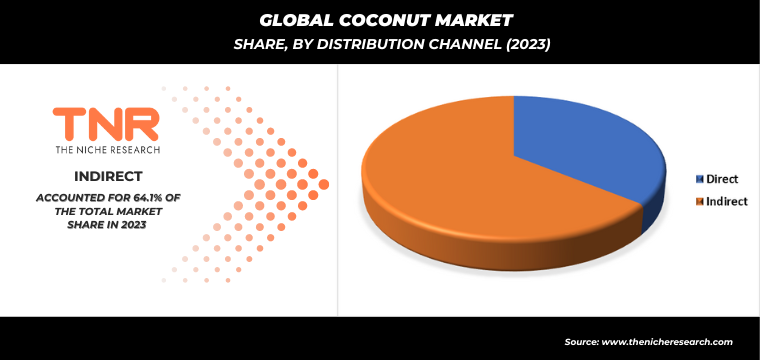
In 2023, Asia Pacific is anticipated to play a significant role in propelling the growth of the coconut market, contributing approximately 41.2% to its overall expansion.
This region’s significant contribution can be attributed to the abundant availability of coconuts in countries like Indonesia, the Philippines, India, and Thailand, which are among the largest producers and exporters of coconut products globally. The region’s strong agricultural base, favorable climatic conditions, and extensive cultivation practices ensure a steady supply of raw materials. Additionally, the rising demand for coconut-based products in both domestic and international markets fuels this growth.
Increased consumer awareness of the health benefits of coconut products, such as coconut water, oil, and milk, further boosts their popularity. The growing trend of natural and organic products, coupled with the expansion of the food and beverage, cosmetics, and personal care industries, positions Asia Pacific as a crucial player in the coconut market’s growth trajectory.

Key Developments
- In May 2022, Danone introduced Alpro, its second dairy-free brand in China following Vega, to penetrate the growing plant-based food sector. The Alpro line includes products such as coconut milk.
- In January 2022, Vita Coco teamed up with Lyft to provide discounts on rides home and promote their hydrating coconut water, aiming to keep customers well-hydrated.
- In February 2021, Los Angeles-based growth-equity firm PowerPlant Ventures revealed its acquisition of ZICO coconut water from The Coca-Cola Company.
Major Players in Coconut Market
- Celebes Coconut Corporation
- Coco Colima SA
- Coco do Vale
- Creative Snacks
- Dabur Company
- Dangfoods
- Danone
- Ducoco Alimentos SA
- Eco Biscuits
- Goindiaorganic
- Maverick Brands
- Global Coconut
- Pulau Sambu
- Renuka Foods
- So Delicious
- The Coconut Company
- THE VITA COCO COMPANY, INC.
- ZICO BEVERAGES
- Other Industry Participants
Global Coconut Market Scope
| Report Specifications | Details |
| Market Revenue in 2023 | US$ 3.3 Bn |
| Market Size Forecast by 2034 | US$ 8.9 Bn |
| Growth Rate (CAGR) | 9.5% |
| Historic Data | 2016 – 2022 |
| Base Year for Estimation | 2023 |
| Forecast Period | 2024 – 2034 |
| Report Inclusions | Market Size & Estimates, Market Dynamics, Competitive Scenario, Trends, Growth Factors, Market Determinants, Key Investment Segmentation, Product/Service/Solutions Benchmarking |
| Segments Covered | By Product Type, By Application, By Distribution Channel, By Region |
| Regions Covered | North America, Europe, Asia Pacific, Middle East & Africa, Latin America |
| Countries Covered | U.S., Canada, Mexico, Rest of North America, France, The UK, Spain, Germany, Italy, Nordic Countries (Denmark, Finland, Iceland, Sweden, Norway), Benelux Union (Belgium, The Netherlands, Luxembourg), Rest of Europe, China, Japan, India, New Zealand, Australia, South Korea, Southeast Asia (Indonesia, Thailand, Malaysia, Singapore, Rest of Southeast Asia), Rest of Asia Pacific, Saudi Arabia, UAE, Egypt, Kuwait, South Africa, Rest of Middle East & Africa, Brazil, Argentina, Rest of Latin America |
| Key Players | Celebes Coconut Corporation, Coco Colima SA, Coco do Vale, Creative Snacks, Dabur Company, Dangfoods, Danone, Ducoco Alimentos SA, Eco Biscuits, Goindiaorganic, Maverick Brands, PT. Global Coconut, PT. Pulau Sambu, Renuka Foods, So Delicious, The Coconut Company, THE VITA COCO COMPANY, INC., ZICO BEVERAGES |
| Customization Scope | Customization allows for the inclusion/modification of content pertaining to geographical regions, countries, and specific market segments. |
| Pricing & Procurement Options | Explore purchase options tailored to your specific research requirements |
| Contact Details | Consult With Our Expert
Japan (Toll-Free): +81 663-386-8111 South Korea (Toll-Free): +82-808- 703-126 Saudi Arabia (Toll-Free): +966 800-850-1643 United Kingdom: +44 753-710-5080 United States: +1 302-232-5106 E-mail: askanexpert@thenicheresearch.com
|
Global Coconut Market
By Product Type
- Desiccated Coconut
- Coconut Milk
- Coconut Oil
- Coconut Water
- Others
By Application
- Food & Beverages
- Snacks & Cereals
- Bakery & Confectionery
- Nutritional Products
- Others
- Pharmaceutical
- Cosmetics & Personal Care
- Others
By Distribution Channel
- Direct
- Indirect
- Hypermarkets/Supermarkets
- Convenience Stores
- Specialty Stores
- Independent Retailers
- Online Retailers
By Region
- North America (U.S., Canada, Mexico, Rest of North America)
- Europe (France, The UK, Spain, Germany, Italy, Nordic Countries (Denmark, Finland, Iceland, Sweden, Norway), Benelux Union (Belgium, The Netherlands, Luxembourg), Rest of Europe)
- Asia Pacific (China, Japan, India, New Zealand, Australia, South Korea, Southeast Asia (Indonesia, Thailand, Malaysia, Singapore, Rest of Southeast Asia), Rest of Asia Pacific)
- Middle East & Africa (Saudi Arabia, UAE, Egypt, Kuwait, South Africa, Rest of Middle East & Africa)
- Latin America (Brazil, Argentina, Rest of Latin America)
Report Layout:
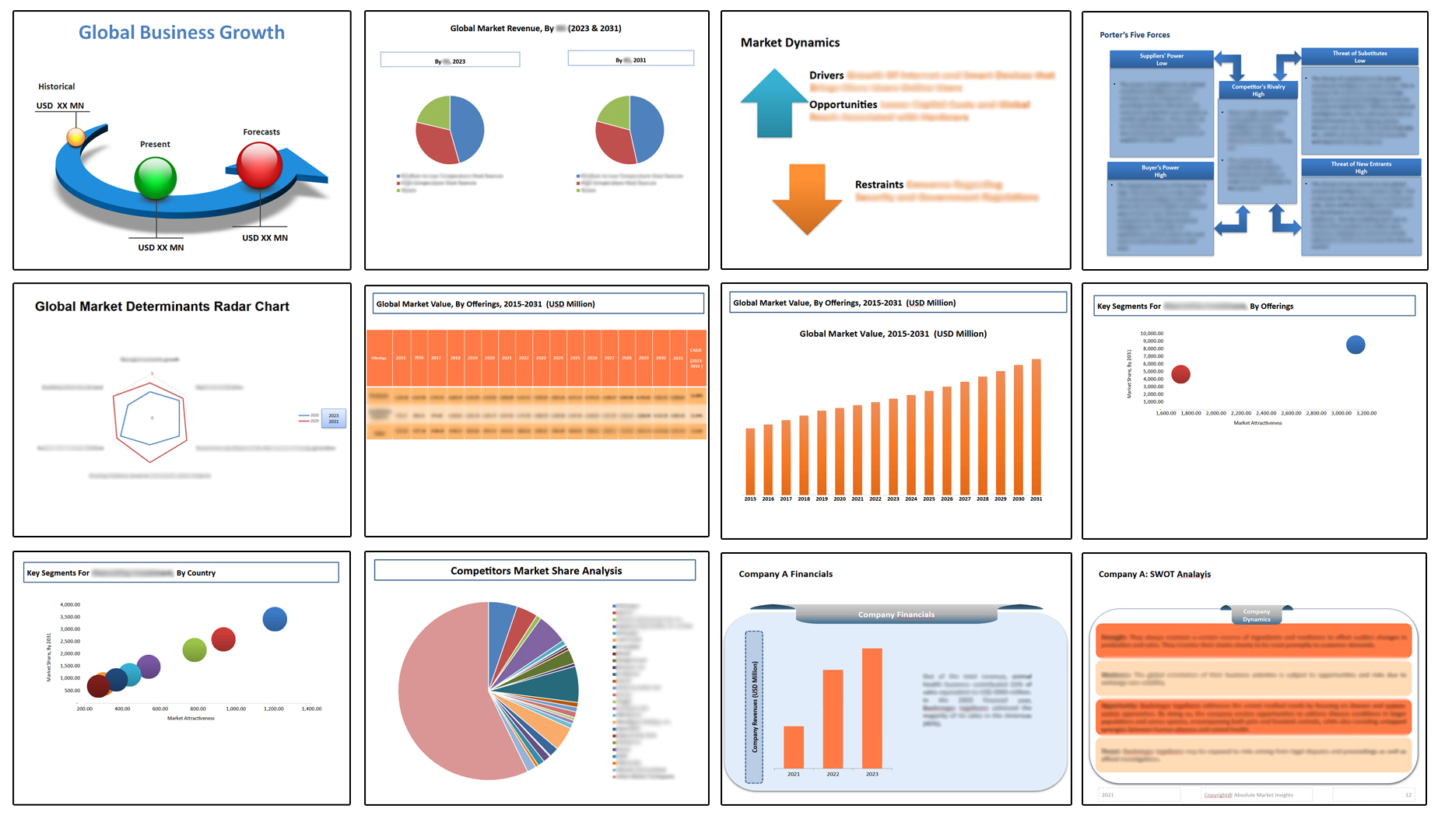
Table of Contents
Note: This ToC is tentative and can be changed according to the research study conducted during the course of report completion.
**Exclusive for Multi-User and Enterprise User.
Global Coconut Market
By Product Type
- Desiccated Coconut
- Coconut Milk
- Coconut Oil
- Coconut Water
- Others
By Application
- Food & Beverages
- Snacks & Cereals
- Bakery & Confectionery
- Nutritional Products
- Others
- Pharmaceutical
- Cosmetics & Personal Care
- Others
By Distribution Channel
- Direct
- Indirect
- Hypermarkets/Supermarkets
- Convenience Stores
- Specialty Stores
- Independent Retailers
- Online Retailers
By Region
- North America (U.S., Canada, Mexico, Rest of North America)
- Europe (France, The UK, Spain, Germany, Italy, Nordic Countries (Denmark, Finland, Iceland, Sweden, Norway), Benelux Union (Belgium, The Netherlands, Luxembourg), Rest of Europe)
- Asia Pacific (China, Japan, India, New Zealand, Australia, South Korea, Southeast Asia (Indonesia, Thailand, Malaysia, Singapore, Rest of Southeast Asia), Rest of Asia Pacific)
- Middle East & Africa (Saudi Arabia, UAE, Egypt, Kuwait, South Africa, Rest of Middle East & Africa)
- Latin America (Brazil, Argentina, Rest of Latin America)
The Niche Research approach encompasses both primary and secondary research methods to provide comprehensive insights. While primary research is the cornerstone of our studies, we also incorporate secondary research sources such as company annual reports, premium industry databases, press releases, industry journals, and white papers.
Within our primary research, we actively engage with various industry stakeholders, conducting paid interviews and surveys. Our meticulous analysis extends to every market participant in major countries, allowing us to thoroughly examine their portfolios, calculate market shares, and segment revenues.
Our data collection primarily focuses on individual countries within our research scope, enabling us to estimate regional market sizes. Typically, we employ a bottom-up approach, meticulously tracking trends in different countries. We analyze growth drivers, constraints, technological innovations, and opportunities for each country, ultimately arriving at regional figures.Our process begins by examining the growth prospects of each country. Building upon these insights, we project growth and trends for the entire region. Finally, we utilize our proprietary model to refine estimations and forecasts.
Our data validation standards are integral to ensuring the reliability and accuracy of our research findings. Here’s a breakdown of our data validation processes and the stakeholders we engage with during our primary research:
- Supply Side Analysis: We initiate a supply side analysis by directly contacting market participants, through telephonic interviews and questionnaires containing both open-ended and close-ended questions. We gather information on their portfolios, segment revenues, developments, and growth strategies.
- Demand Side Analysis: To gain insights into adoption trends and consumer preferences, we reach out to target customers and users (non-vendors). This information forms a vital part of the qualitative analysis section of our reports, covering market dynamics, adoption trends, consumer behavior, spending patterns, and other related aspects.
- Consultant Insights: We tap into the expertise of our partner consultants from around the world to obtain their unique viewpoints and perspectives. Their insights contribute to a well-rounded understanding of the markets under investigation.
- In-House Validation: To ensure data accuracy and reliability, we conduct cross-validation of data points and information through our in-house team of consultants and utilize advanced data modeling tools for thorough verification.
The forecasts we provide are based on a comprehensive assessment of various factors, including:
- Market Trends and Past Performance (Last Five Years): We accurately analyze market trends and performance data from preceding five years to identify historical patterns and understand the market’s evolution.
- Historical Performance and Growth of Market Participants: We assess the historical performance and growth trajectories of key market participants. This analysis provides insights into the competitive landscape and individual company strategies.
- Market Determinants Impact Analysis (Next Eight Years): We conduct a rigorous analysis of the factors that are projected to influence the market over the next eight years. This includes assessing both internal and external determinants that can shape market dynamics.
- Drivers and Challenges for the Forecast Period:Identify the factors expected to drive market growth during the forecast period, as well as the challenges that the industry may face. This analysis aids in deriving an accurate growth rate projection.
- New Acquisitions, Collaborations, or Partnerships: We keep a close watch on any new acquisitions, collaborations, or partnerships within the industry. These developments can have a significant impact on market dynamics and competitiveness.
- Macro and Micro Factors Analysis:A thorough examination of both macro-level factors (e.g., economic trends, regulatory changes) and micro-level factors (e.g., technological advancements, consumer preferences) that may influence the market during the forecast period.
- End-User Sentiment Analysis: To understand the market from the end-user perspective, we conduct sentiment analysis. This involves assessing the sentiment, preferences, and feedback of the end-users, which can provide valuable insights into market trends.
- Perspective of Primary Participants: Insights gathered directly from primary research participants play a crucial role in shaping our forecasts. Their perspectives and experiences provide valuable qualitative data.
- Year-on-Year Growth Trend: We utilize a year-on-year growth trend based on historical market growth and expected future trends. This helps in formulating our growth projections, aligning them with the market’s historical performance.
Research process adopted by TNR involves multiple stages, including data collection, validation, quality checks, and presentation. It’s crucial that the data and information we provide add value to your existing market understanding and expertise. We have also established partnerships with business consulting, research, and survey organizations across regions and globally to collaborate on regional analysis and data validation, ensuring the highest level of accuracy and reliability in our reports.
